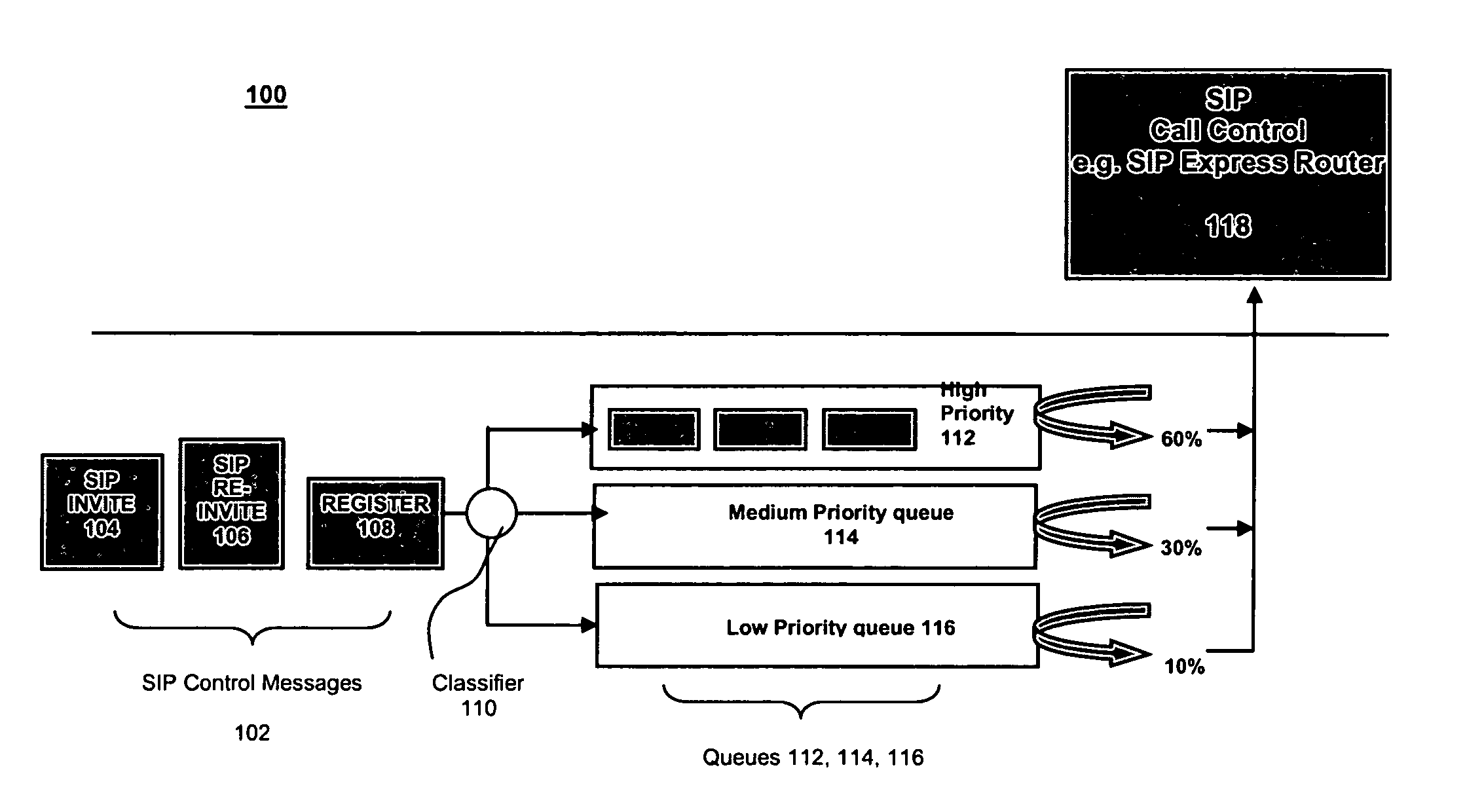Overload protection for SIP servers
a server and overload protection technology, applied in the field of information processing systems, can solve the problems of launching loads that exceed the resources of the server, affecting the user experience, and causing more dropped calls for users
- Summary
- Abstract
- Description
- Claims
- Application Information
AI Technical Summary
Benefits of technology
Problems solved by technology
Method used
Image
Examples
example
Condition-bit-vector:
[0070]
C1C2C3C4C5
Rule Bit-vectors:
[0071]
R1: 10010R2: 00100R3: 01011R4: 10001
[0072]During run-time message processing, assume the following INVITE message is sent from Arup to Xiping:
[0073]
INVITE sip:arup@us.ibm.com SIP / 2.0From : ArupTo : Xiping
[0074]Once the header matching algorithm is run on this message, in step 212 the Header-Value Table will be populated as shown in Table 2. For each header in the Header-Table, the Classifier 110 determines whether the header exists in the SIP message and if so, returns a pointer to the header value in the message. Rather than iterate over each header, efficient multi-pattern string matching algorithms may be used, which can look for multiple patterns (headers) simultaneously using a single iteration. In this example, an embodiment of the present invention uses the SIP parser from the osip open source software to parse all the headers, resulting in a table where each row may comprise . In another embodiment, this is enhanced...
PUM
 Login to View More
Login to View More Abstract
Description
Claims
Application Information
 Login to View More
Login to View More - R&D
- Intellectual Property
- Life Sciences
- Materials
- Tech Scout
- Unparalleled Data Quality
- Higher Quality Content
- 60% Fewer Hallucinations
Browse by: Latest US Patents, China's latest patents, Technical Efficacy Thesaurus, Application Domain, Technology Topic, Popular Technical Reports.
© 2025 PatSnap. All rights reserved.Legal|Privacy policy|Modern Slavery Act Transparency Statement|Sitemap|About US| Contact US: help@patsnap.com



